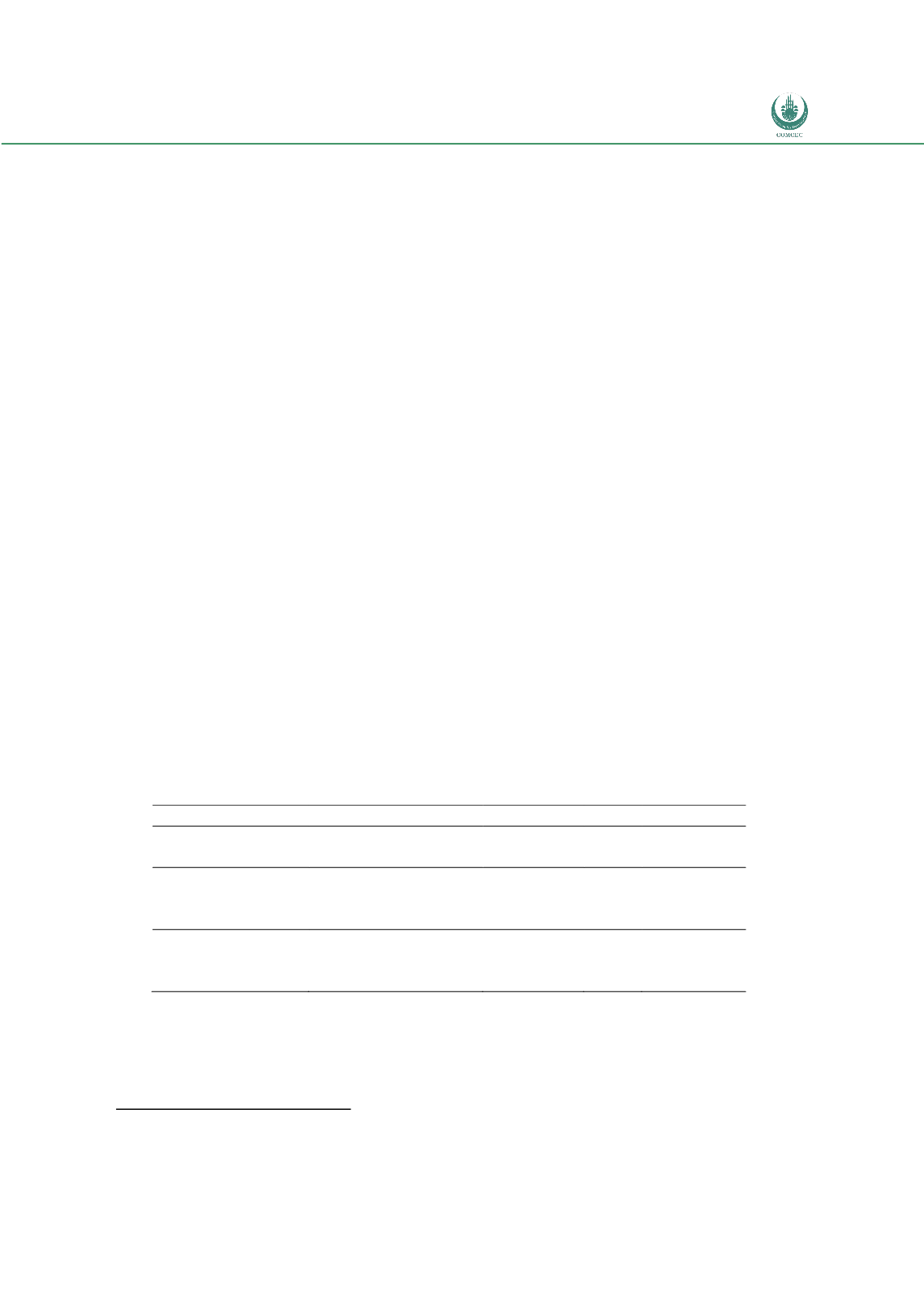

Preferential Trade Agreements and Trade Liberalization Efforts in the OIC Member States
With Special Emphasis on the TPS-OIC
97
the OIC), Philippines, Singapore, and Thailand. Between 1995 and 1999 four new countries
joined ASEAN - Cambodia, Lao PDR, Myanmar and Viet Nam (CLMV).
AFTA provided for the gradual reduction of tariffs among the signatories under CEPT
(Common Effective Preferential Tariff). For the original 6 ASEAN members the process was to
be completed by 2010 and ASEAN data indicate that by January 2010, 99.65 percent of all tariff
lines of the six original ASEAN members had been brought down to zero. Positive tariffs
remained for some agricultural products, and especially rice included in the so-called Sensitive
and Highly-Sensitive Lists, as well as products included in the General Exclusion List (e.g.
weapons, opium, etc.). For the CLMV countries, 98.96 percent of total tariff lines were brought
to the 0-5 percent range
17
.
The table below gives the average MFN tariffs and average preferential tariffs on imports by
Brunei, Indonesia and Malaysia for 2000, 2005 and 2010 (subject to data availability) both
from the world and from ASEAN partners. It can readily be seen that both MFN tariffs and
preferential tariffs are low. For Indonesia in 2010 the ASEAN partners on average enjoyed a 4
percentage point preference margin relative to the world as a whole and 6.7 percentage point
relative to countries facing MFN tariffs. Indonesia in 2010 had positive tariffs on ASEAN
imports for 12 HS 6-digit products for which tariffs equalled tariffs on MFN imports. However,
in 2010 MFN tariffs were levied on 4127 product lines imported from non-ASEAN countries, of
which 144 were over 10%, and a further 398 above 5%. This suggests a substantial tariff
margin on over 500 product lines for Indonesia. In the case of Brunei and Malaysia the
preferential rates applied to imports from ASEAN partners also declined to close to zero by
2010. This implies Brunei on average giving preference margins of below 3 percentage points
whereas in the case of Indonesia preference margins can be somewhat higher - up to 6.7
percentage point (the level of the MFN tariff).
Table 14: Simple Average MFN and Preferential Tariffs Applied by ASEAN’s OIC members
Reporter
Partner
2000
2005
2010
Brunei Darussalam ASEAN
World (MFN)
3.16
2.14
3.02
Indonesia
ASEAN
8.16
2.13
0.04
World (MFN )
8.43
6.95
6.7
World (applied tariff)
8.43
5.71
4.18
Malaysia
ASEAN
World (MFN)
8.34 (2001)
7.43
6.95 (2009)
World (applied tariff) 7.39 (2001)
7.43 4.91 (2009)
Note: Preferential rates for Brunei and Malaysia imports from ASEAN are reported as either missing in
TRAINS database or appear not to be correct (i.e. equal to MFN whereas applied preferential rates
17
See the undated note Trade Facilitation
http://www.asean.org/archive/FactSheet/AEC/AEC-01.pdf; accessed on
25 April 2014.

















